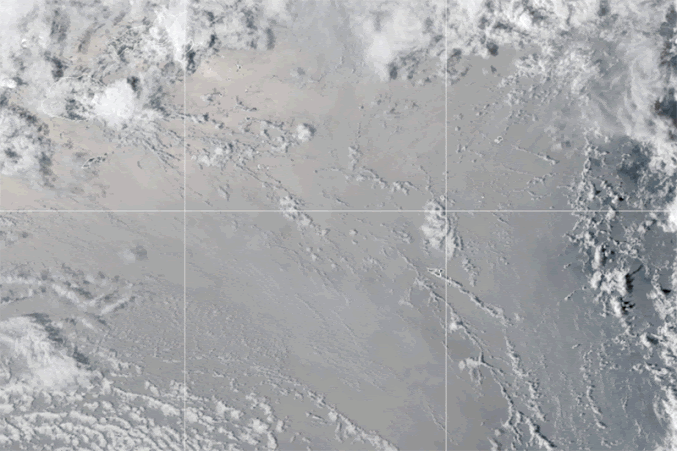Wainaku Executive Center is a former sugar warehouse that was renovated by the late J.W.A "Doc" Buyers, the last CEO of the C. Brewer & Co. agricultural company. He moved moved the C. Brewer headquarters from Honolulu to to Wainaku in Hilo. C. Brewer owned some 38,000 acres in Kaʻū, including some 8,000 around Kaʻū purchased by Olson. Olson bought macadamia orchards, pastures and sugar lands from Brewer and started processing and growing coffee and macadamia. He also bought Brewer's headquarters at Wainaku in 2012 after C. Brewer shut down.
The new venture at Wainaku will be owned and led by Ola Brew, and preliminary plans call for a distillery and growing ti plants on the property. A tasting room for Okolehao and Ola Brew's other products is planned, according to Olson Trust representatives.
Ti used for Okolehao also provides the leaf for wrapping food for cooking in imu and steaming laulau, as well as making ti leaf lei. For Okolehao, ti provides the root from which distilling makes the alcoholic drink. Ola Brew has already started growing ti on the island and has won awards. For its Okolehao spriits, Ola Brew last year took Double Gold and Best in Class in the @sfworldspiritscompetition. An Ola Brew statement explains the background:
STATE SENATOR DRU KANUHA who represents west Kaʻū into Kona, is reaching out to all of Kaʻū in anticipation of running for reelection. He has placed a message in The Kaʻū Calendar newspaper, February edition, saying:
"What is Okolehao? Brewed and then distilled from 100% Hawaiian grown ti root. Okolehao was the first alcohol produced and consumed in Hawai'i centuries ago. Once the ti root is harvested, we roast it to
break down and release its sugars, giving us a caramelization that enhances the unique earthiness of the spirit with layers of flavor and a lingering subtle sweetness.
"Every part of the ti plant, from the root to the leaves, has been used for centuries throughout Polynesia. In Hawai'i we use them for lei making, food preservation, medicinally and in ceremony, and of course in Okolehao. But here is the kicker! Ti just so happens to be in the same family as agave, which is the signature crop for the production of tequila!
"Ola Brew is so very excited to perpetuate the traditions of Okolehao production using organically and responsibly grown ti, cultivated right here on Hawai'i Island!"
 |
| Ed Olson at the blessing of the Wainaku Center in 2012. It is soon to become a distillery for Okolehao. Photo by Julia Neal |
"Every part of the ti plant, from the root to the leaves, has been used for centuries throughout Polynesia. In Hawai'i we use them for lei making, food preservation, medicinally and in ceremony, and of course in Okolehao. But here is the kicker! Ti just so happens to be in the same family as agave, which is the signature crop for the production of tequila!
"Ola Brew is so very excited to perpetuate the traditions of Okolehao production using organically and responsibly grown ti, cultivated right here on Hawai'i Island!"
Ola Brew's facilities already include a brewery, taproom and restaurant in Kona and a taproom and restaurant in Hilo.
According to Ola Brew, "Hawaiian Ola Brewing Corporation (dba Ola Brew) is a brewery with a focus on ethical and growth-oriented sourcing, working every day to help Hawai'i farmers increase their demand by ensuring a guaranteed market for their crops. We’ve successfully grown a brand of over 25 beverages in Hawai'i, including beers, hard ciders, and hard seltzers."
See more on Ola Brew at www.olabrewco.com.
To read comments, add your own, and like this story, see www.facebook.com/kaucalendar/. See latest print edition at www.kaucalendar.com. See upcoming events and Kaʻū Calendar newspaper sponsors at http://kaunewsbriefs.blogspot.com/2022/02/events-of-february-2022.html.
"It has been an honor representing parts of Kaʻū in the Hawai'i State Senate since 2018. Together, we've improved the schools and health care facilities our families count on, protected our Kona and Kaʻū coffee farmers, worked to expand access to broadband connectivity, and come together to care for our community through the COVID-19 pandemic."
This year, Senate District 3 will expand to include Pāhala and Volcano Village. Over the coming months, I look forward to meeting you, and learning how I can best advocate for our needs, and earning your trust and your vote. Mahalo for the opportunity to serve you!"
To read comments, add your own, and like this story, see www.facebook.com/kaucalendar/. See latest print edition at www.kaucalendar.com. See upcoming events and Kaʻū Calendar newspaper sponsors at http://kaunewsbriefs.blogspot.com/2022/02/events-of-february-2022.html.
STATE SENATOR JOY SAN BUENAVENTURA continues to serve east Kaʻū through the 2022 Hawai'i Legislature. This year, she is expected to run for reelection for a district outside of Kaʻū, following reapportionment changing district lines. The district now served by Sen. Dru Kanuha will change to reach into Volcano and include all of Kaʻū.
In wrapping up her service here, San Buenaventura sent out a survey card through U.S. Mail this week and asks:
 |
| Sen. Joy San Buenaventura is in her last term serving Kaʻū, with her district borders moving east. |
San Buenaventura also asks about infrastructure needs, including Poor Internet Access, No Alternate Roads and a fill-in-the-blank. "What is your biggest issue?" asks the senator, with the query, "What would promote a better quality of life for you in our community?"
The answers can be given online at https://tinyurl.com/202202-D2survey.
To read comments, add your own, and like this story, see www.facebook.com/kaucalendar/. See latest print edition at www.kaucalendar.com. See upcoming events and Kaʻū Calendar newspaper sponsors at http://kaunewsbriefs.blogspot.com/2022/02/events-of-february-2022.html.
THE VOLCANO ERUPTION AT HUNGA TONGA-HUNGA HA'APAI on Jan. 15 was recorded on this island. That is the subject of this week's Volcano Watch, written by USGS Hawaiian Volcano Observatory scientists and affiliates: Hunga Tonga-Hunga Ha’apai volcano located in the Kingdom of Tonga produced a powerful eruption on Jan. 15 just after 5 p.m. Tonga Time. The Tonga eruption was recorded on pressure sensors over a wide number of places around the world, including the Island of Hawai‘i about 4,900 kilometers (3,000 miles) away.
Hunga Tonga-Hunga Ha’apai is located about 64 kilometers (40 miles) north of the Tongan capital city of Nuku’alofa. As with many volcanoes in Tonga, the part of the volcano that is visible above water is small compared to the submarine extent of the edifice and eruptions can alternately grow new land or destroy any islands that are formed.
The volcano previously erupted in 2014-2015 in an extended sequence that created one larger island by connecting two separate islets. After this episode, the volcano went into a quiet period but it re-awakened in mid-December 2021.
The largest eruption occurred on Jan. 15 from about 5:10 to 5:30 p.m. TOT, about 6:10 to 6:30 p.m. Hawaii Standard Time on January 14, and shot ash and hot gas tens of kilometers (several miles) into the atmosphere. Several centimeters (about 1 to 3 inches) of ash was deposited on the main island of Tongatapu and Nuku’alofa.
The skyward rushing ash column was amongst highest observed in modern times and this column generated strong air pressure waves which moved up from the volcano and spread outward from Tonga. Incredibly, the air pressure waves were observed over the entire Earth and people in Alaska (nearly 10,000 kilometers or 6,000 miles away) heard sounds from the eruption. How was this possible?
Volcanic eruptions produce significant pressure waves from the ejection of rocks and ash. These pressure waves in the air can occur at many different frequencies, from very high frequencies that we hear as sounds (audible) and at lower frequencies that we cannot hear at all (called infrasound). Both types of waves were generated by the recent eruption in Tonga.
The pressure waves might dissipate quickly if the Earth's atmosphere were uniform. Instead, the atmosphere is layered, and these layers help sound to move efficiently. For pressure waves, the layers relate mostly to the temperature and wind speed of the air and the efficient movement of these waves occurs in the layers called the troposphere, stratosphere and thermosphere.
The speed that pressure waves travel through the Earth’s atmospheric layers is about 1,100 kilometers or 700 miles per hour. At those speeds it would take a little more than 4 hours for the sound to travel from Tonga to Hawaii.
The USGS Hawaiian Volcano Observatory operates a set of microphone-like pressure sensors that are deployed to "listen" to our own volcanoes. If there is a large global eruption, and the atmospheric conditions allow, then that eruption can also be captured on the HVO pressure sensor network.
If we look at the pressure sensor data for the time about four hours after the recent Tonga eruption, we see a large pressure pulse moving over Hawaii (see the two sensor recordings in the figure) at 10:40 p.m. HST on January 14. While Hawaii’s pressure sensor network is designed to detect eruptive activity for Mauna Loa, Kīlauea, and along the Hawaiian rift zones, it also captured the sound waves from the distant Tonga eruption.
Close inspection of the waves observed in the figure illustrates the idea of audible and infrasound waves discussed earlier.
The pressure waves are wider at the start of the event and become narrower with time. Since the plot shows wave size with time, this means the earlier waves (left side of the plot) show slow changes of pressure with time. With more time passing, the wave pressure oscillates more quickly. This means that the first waves are low frequency, and the later waves are higher frequency.
The human ear can generally hear pressure changes higher than about 20 cycles per second (or 20 hertz). Most of the waves shown in the plots are very low frequency and would not be detected by the human ear.
In Hawai'i, there were no reports of the Tonga eruption being heard, but they were seen traversing the atmosphere on top of Mauna Kea.
The observation of audible sound waves in Alaska and inaudible waves elsewhere is a topic of interest from scientists, who are looking at the ways that pressure waves propagate in the atmosphere. Regardless, the observation of sound waves moving over the entire Earth is remarkable.
 |
| Eruption of Hunga Tonga-Hunga Ha'apai captured by NASA satellites and by pressure sensors on Hawai'i Island. Images from NASA |
The volcano previously erupted in 2014-2015 in an extended sequence that created one larger island by connecting two separate islets. After this episode, the volcano went into a quiet period but it re-awakened in mid-December 2021.
The largest eruption occurred on Jan. 15 from about 5:10 to 5:30 p.m. TOT, about 6:10 to 6:30 p.m. Hawaii Standard Time on January 14, and shot ash and hot gas tens of kilometers (several miles) into the atmosphere. Several centimeters (about 1 to 3 inches) of ash was deposited on the main island of Tongatapu and Nuku’alofa.
The skyward rushing ash column was amongst highest observed in modern times and this column generated strong air pressure waves which moved up from the volcano and spread outward from Tonga. Incredibly, the air pressure waves were observed over the entire Earth and people in Alaska (nearly 10,000 kilometers or 6,000 miles away) heard sounds from the eruption. How was this possible?
Volcanic eruptions produce significant pressure waves from the ejection of rocks and ash. These pressure waves in the air can occur at many different frequencies, from very high frequencies that we hear as sounds (audible) and at lower frequencies that we cannot hear at all (called infrasound). Both types of waves were generated by the recent eruption in Tonga.
The pressure waves might dissipate quickly if the Earth's atmosphere were uniform. Instead, the atmosphere is layered, and these layers help sound to move efficiently. For pressure waves, the layers relate mostly to the temperature and wind speed of the air and the efficient movement of these waves occurs in the layers called the troposphere, stratosphere and thermosphere.
The speed that pressure waves travel through the Earth’s atmospheric layers is about 1,100 kilometers or 700 miles per hour. At those speeds it would take a little more than 4 hours for the sound to travel from Tonga to Hawaii.
The USGS Hawaiian Volcano Observatory operates a set of microphone-like pressure sensors that are deployed to "listen" to our own volcanoes. If there is a large global eruption, and the atmospheric conditions allow, then that eruption can also be captured on the HVO pressure sensor network.
If we look at the pressure sensor data for the time about four hours after the recent Tonga eruption, we see a large pressure pulse moving over Hawaii (see the two sensor recordings in the figure) at 10:40 p.m. HST on January 14. While Hawaii’s pressure sensor network is designed to detect eruptive activity for Mauna Loa, Kīlauea, and along the Hawaiian rift zones, it also captured the sound waves from the distant Tonga eruption.
Close inspection of the waves observed in the figure illustrates the idea of audible and infrasound waves discussed earlier.
The pressure waves are wider at the start of the event and become narrower with time. Since the plot shows wave size with time, this means the earlier waves (left side of the plot) show slow changes of pressure with time. With more time passing, the wave pressure oscillates more quickly. This means that the first waves are low frequency, and the later waves are higher frequency.
The human ear can generally hear pressure changes higher than about 20 cycles per second (or 20 hertz). Most of the waves shown in the plots are very low frequency and would not be detected by the human ear.
In Hawai'i, there were no reports of the Tonga eruption being heard, but they were seen traversing the atmosphere on top of Mauna Kea.
The observation of audible sound waves in Alaska and inaudible waves elsewhere is a topic of interest from scientists, who are looking at the ways that pressure waves propagate in the atmosphere. Regardless, the observation of sound waves moving over the entire Earth is remarkable.
To read comments, add your own, and like this story, see www.facebook.com/kaucalendar/. See latest print edition at www.kaucalendar.com. See upcoming events and Kaʻū Calendar newspaper sponsors at http://kaunewsbriefs.blogspot.com/2022/02/events-of-february-2022.html.
SEE CALENDAR OF EVENTS & SPONSORS





